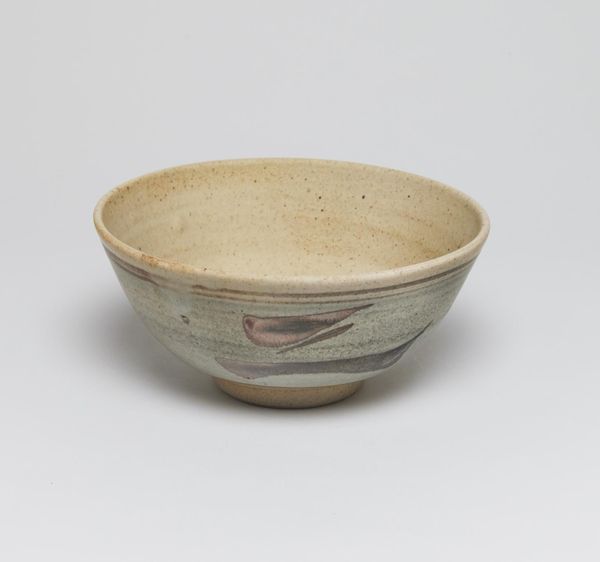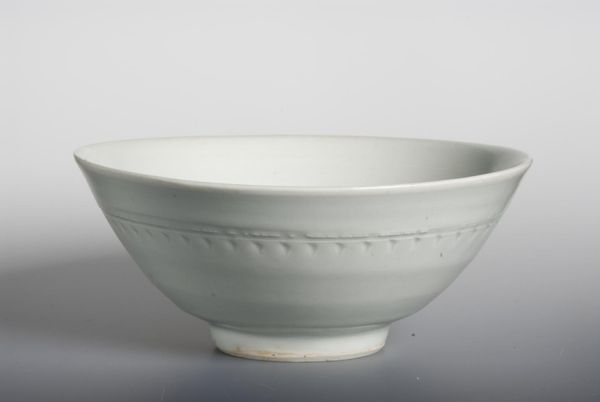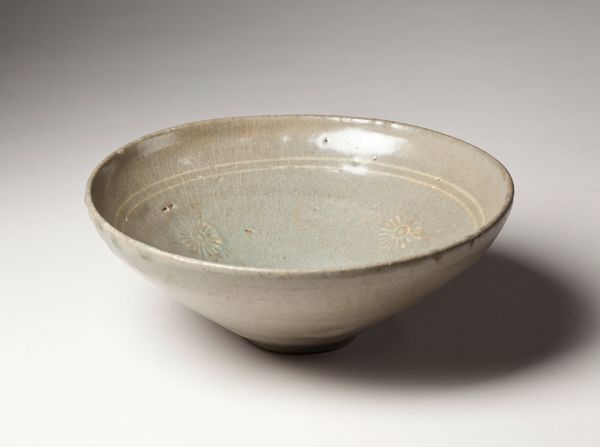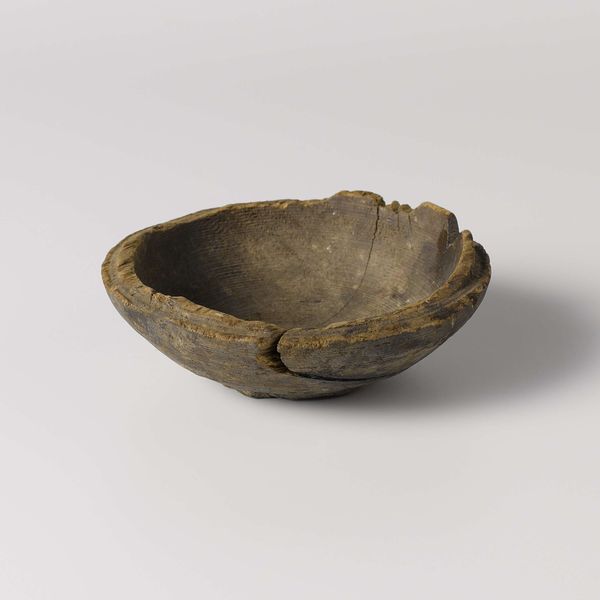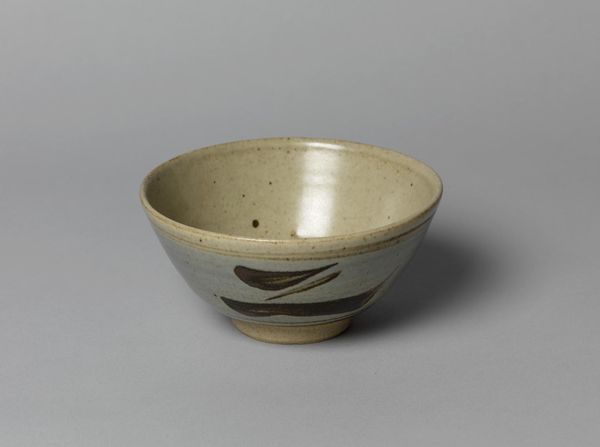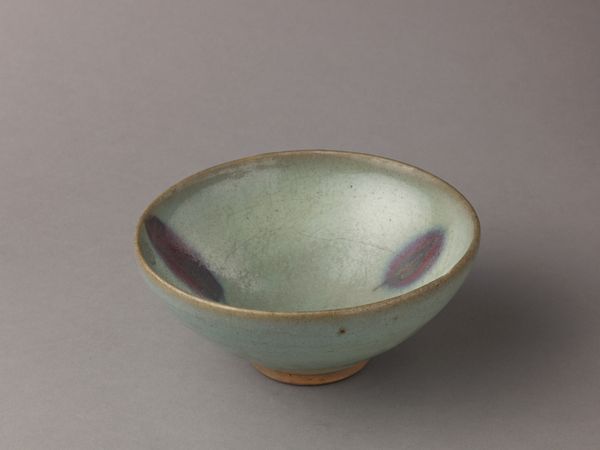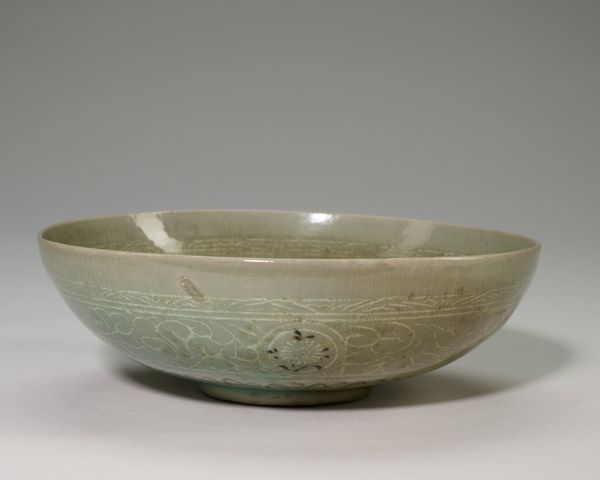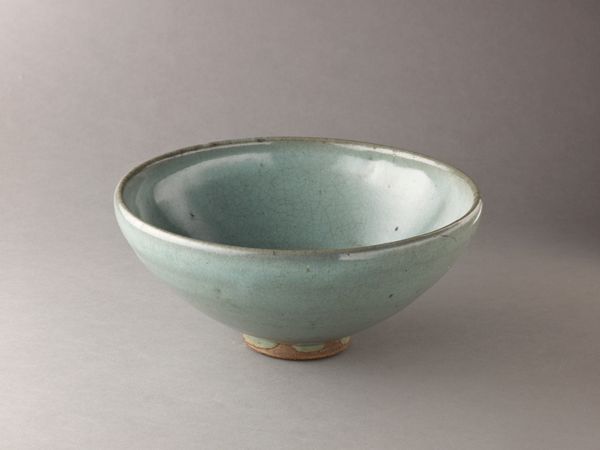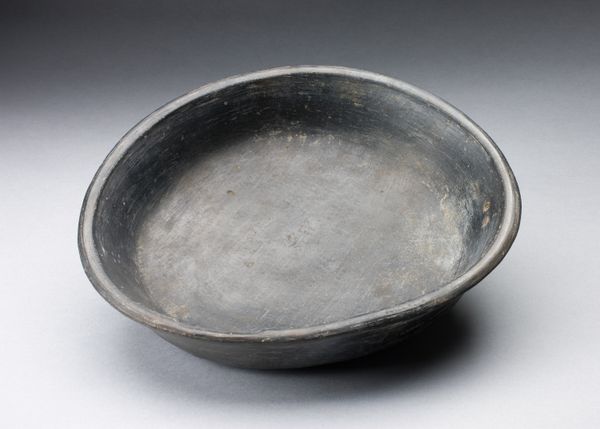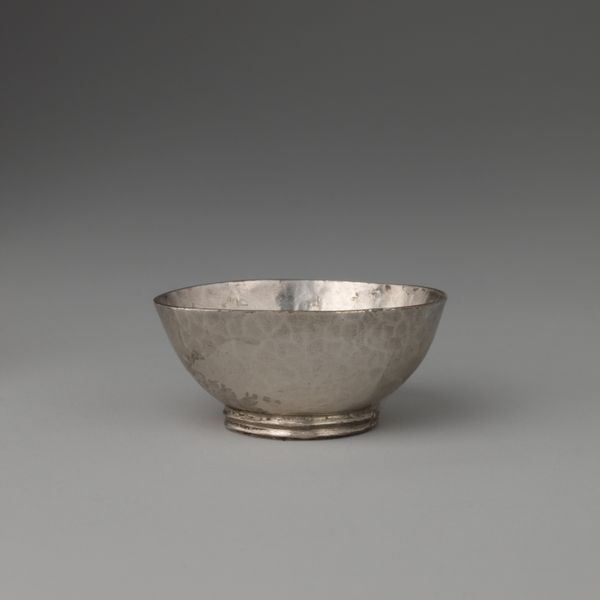
ceramic, porcelain
#
asian-art
#
ceramic
#
porcelain
#
ceramic
Dimensions: 1 3/4 × 5 9/16 × 5 1/2 in. (4.45 × 14.13 × 13.97 cm)
Copyright: Public Domain
Curator: This is a delightful little thing, isn’t it? It’s a porcelain dish, made sometime in the 15th or 16th century. We don’t know the name of the artist, sadly. It resides here at the Minneapolis Institute of Art, where it is listed as Asian art. Editor: I'm immediately struck by how deceptively simple it is. It's like looking at a wabi-sabi haiku. The colour is muted, almost ethereal, and those delicate flower-shaped edges give it a gentle, organic feel. Curator: Yes! The flower form is definitely key to unlocking some meaning. Floral motifs in Asian art often speak to ideas of transience and beauty. And with porcelain, it's also worth remembering the intense labour involved, reflecting on social class and the expense to acquire this piece. Editor: I imagine the smoothness, that milky glaze would feel wonderful in your hands. Though, I see a small imperfection... a crack there. It lends the dish character, doesn’t it? A history quietly etched into its surface. It makes it more human. I love that imperfection makes us recognize each other more quickly. Curator: It's a testament to its age, wouldn't you agree? The dish also has a certain humbleness about it. Not as extravagantly decorated as other porcelain wares of that time and origin. Editor: Perhaps it was made for a more introspective soul, someone who found beauty in the quiet moments. Or for somebody with less budget available. Imagine using it for tea or some small, personal treat. Like the most delicate blossom holding just a single drop of morning dew! Curator: The flower shape and the whiteness could also relate to rituals involving purity and contemplation. Objects such as this flower dish may have carried multiple layers of meaning depending on their user and context. Editor: You know, looking at it this way, it really does transcend its function as just a dish. It becomes a vessel for reflection, doesn’t it? Holding not just food, but the weight of cultural memory. Curator: I couldn't agree more. Objects can certainly function as silent storytellers, allowing us glimpses into forgotten histories and sensibilities. Editor: Well, this humble flower dish certainly sparked quite the conversation! Thanks for walking me through some cultural context here. Curator: My pleasure!
Comments
minneapolisinstituteofart almost 2 years ago
⋮
Although it was originally intended only for elite patrons, the increasing popularization of porcelain over the fifteenth and sixteenth centuries led to the eventual decline and end of Buncheong ware. Carved lines on the exterior of this bowl and its lobed rim suggest the shape of a flower.
Join the conversation
Join millions of artists and users on Artera today and experience the ultimate creative platform.
